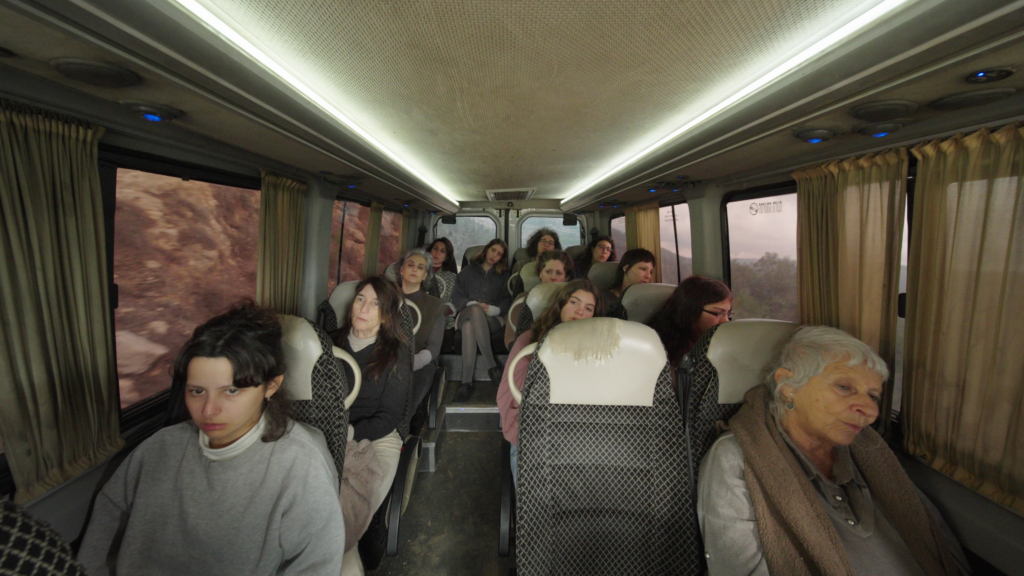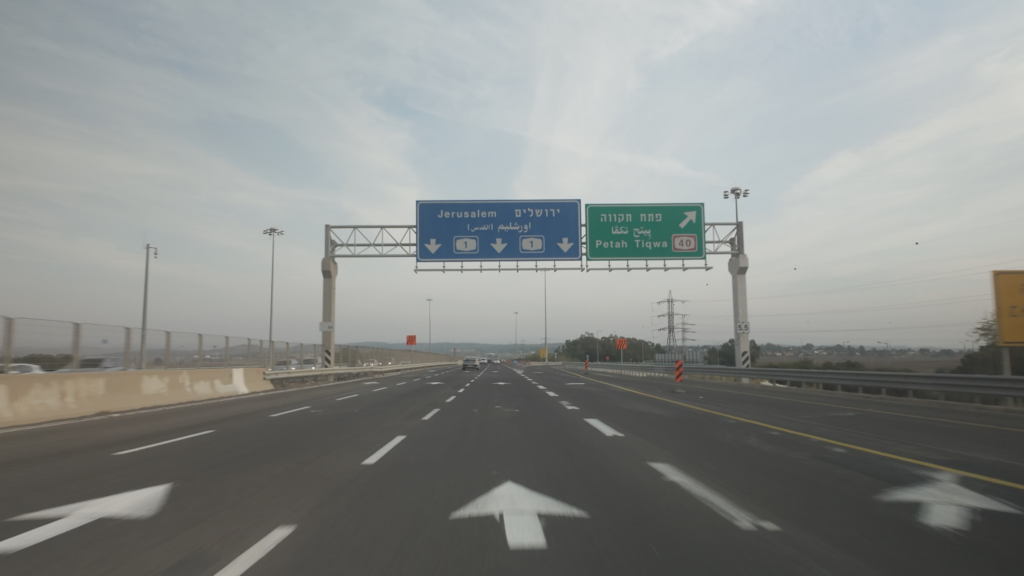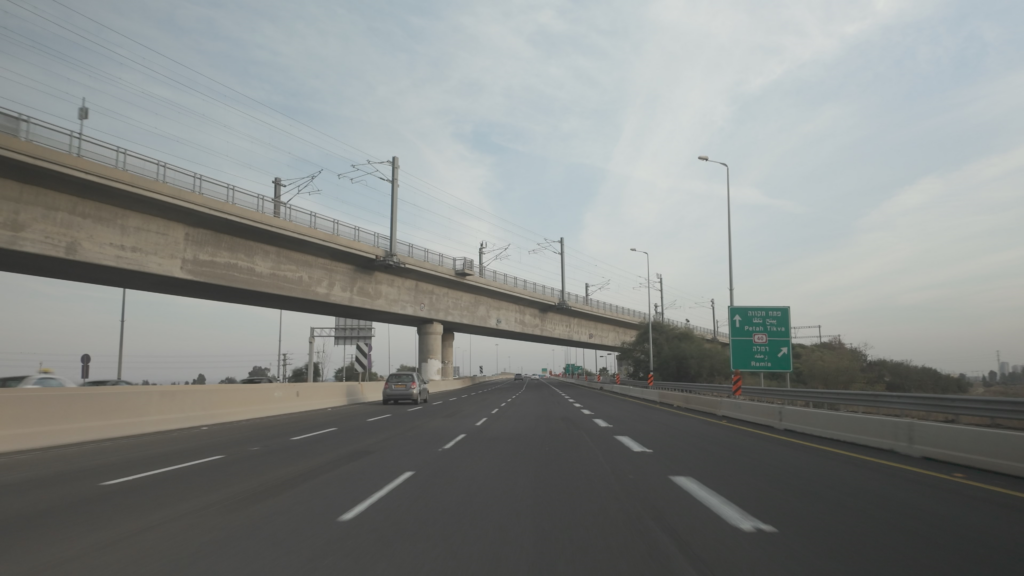Daniel Kiczales: Orientations
Curator: Irena Gordon
14/02/2025 -
21/06/2025

Orientations combines Daniel Kiczales’s (b. 1980) various practices—composition, video, and sound—with a multi-participant performative act. Created during the current war year, the work is a visual, vocal, and lingual journey of two choirs moving through the landscape at this time. The role division between the choirs is intentionally simplistic and predominantly gender-based: one consists of twelve women of different ages, producing pre-lingual sounds while traveling in a taxi van on bumpy roads. The jolts of the ride affect the production of the voice and countenance. The rough road becomes a major instrument on the musical and expressive levels, when observation is directed inward, into the crowded space of the vehicle. The women’s choir is affected by a terrain yet unmarked, unpaved, unsettled, and unmapped. The bumpy road becomes a musical score of tremors, rhythmic textures, and leaps, which are an integral part of singing based on loss of control; singing that sometimes sounds like crying or lamentation, at other times like a hysterical, possessed chant, and at yet others like stuttering or garbled speech. The resulting experience is one of disorientation, as the viewers have no idea where they are or where they are headed. The situation is tantamount to blindness or getting lost.
The second choir consists of five men singing the drive on Route 1, from the airport to Jerusalem. Here, the gaze is directed from the vehicle outward and ahead, at the road and the landscape on either side. At the outset of the journey, still at the airport, we hear radio noise, as if someone is trying to tune on a desired channel. The singing of the men then begins, chanting the place names on the signs they pass, marking the stations along the way or parting with them. They map the names of the cities, towns, and directions along the road to Jerusalem, creating a double image of a place: an image of the Sisyphean, contemporary, mundane reality and a conceptual image related to pilgrimage, its spiritual baggage and formative historical narratives. Their singing is based on orientation, and their vocal presence conveys confidence. The destination of the journey turns out to be Jerusalem, and the viewers know where they are at any given moment.
The history of choirs is linked to ancient and modern musical traditions— theatrical and shamanic, religious and avant-garde alike. From the outset, the choir has embodied principles of law and order, alongside solidarity and a potential for change and protest. All of these elements come together in the vocal and visual array of the work. Both choirs operate in absurd cyclicality (verging on the comic) performed in a liturgical spirit. The mechanisms underlying them strive forward, and spatial progress is a condition for their very existence. Stopping, looking back, or reaching the destination disrupts the apparatus. The choir diptych documents performances carried out simultaneously inside moving vehicles, while the landscape and the ground underlying the operation mechanism and the ritual are given a partial, regimented visual representation, framed by the vehicle’s windows or the gaze at the road.
Orientations explores the interrelations between sound and word: on theone hand, the sound that precedes words, and on the other, the sound of words that allows for spatial orientation—a term originating from the word ”Orient”—the east which was the guiding geographical and cultural direction, before the establishment of the north as reference point. The voice is an abstract extension of the body, of its corporeality, and the choir, as a singular-plural body, is an extension of society. Body and voice transpire within the landscape, moving through the scenery and observing it, while the landscape is outside the body. History collides with the landscape in an almost traumatic manner, and the physical body’s consciousness tries to capture the past in the present, wondering what awaits in the next moment.

Vocal coaching & consultation:
Laila Mazal Yenishen
Women’s choir:
Bar Eran
Maya Pennington
Alma Goldshmidt
Sapir Rosenblatt
Tom Silberberg
Laila Mazal Yenishen
Hila Flashkes
Liza Makarov
Nina Makarov
Naomi Yoeli
Alina Ashbel
Yael Dushy
Collaborators in vocal work development:
Laila Mazal Yenishen
Bar Eran
Sapir Rosenblatt
Netta Spiegel
Production manager:
Dafna Cohen
Men’s choir:
Ariel Leykin
Or Aloni
Ilan Barkani
Gidon Levy
Daniel Kiczales
Collaborator in vocal work development:
Ariel Leykin
Photography:
Omri Barzilai
Field recording:
Gal Naim
Sound consultation & mixing:
Ori Kadishay
Editing:
Kobi Vogman
Colorist:
Assaf Arviv
After Effects:
Gil McNeil



